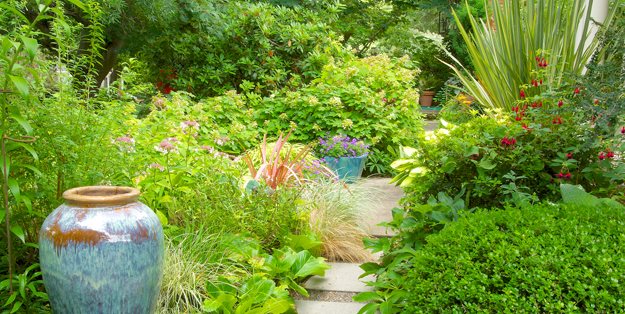Focus On Containers
Looking for the perfect pop of color to draw your eye and enhance your mood in the garden? Create a stunning focal point by including a container—a central subject that can lend continuity throughout the seasons as plants go in and out of bloom.Accessorizing a garden is like decorating a home or choosing a new outfit. How a garden is adorned sets the tone and defines a space. To establish order, focal points are commonly used as part of basic garden design. A focal point is the anchor around which the rest of the garden is created. Mindful placement of plants and hardscaping enhances the visual organization of a landscape. A central subject lends continuity throughout the seasons as plants go in and out of bloom. Without something to focus on, the eye wanders, looking for a place to rest.
A focal point can be a foundation plant, gazebo, chair, water feature, statue or a piece of art. It acts as a calling card, the cue that invites viewers to explore the garden further.
Containers are commonly used as focal points and are equally effective whether planted or left empty. There are several factors to consider when choosing a pot. Color incites the mood; bold hues of yellow or red create drama and excitement, while cooler tones of blue and green are more serene. Selecting a pot with hues similar to a home’s exterior integrates the house with the landscape. A Craftsman or Victorian home is more suited to traditional urns, while a ranch or contemporary-style home is enhanced by modern planters.
The size and shape of a pot is also important. A large container works well in most spaces, while smaller pots have more impact when grouped together. A tall, slender vessel evokes elegance and adds height, while a short container leads the eye through a scene.
There are no hard and fast rules when it comes to placement. A container that’s situated at the center of a landing causes the viewer to pause and enjoy the immediate surroundings. One or two pots placed at an entrance entices visitors to move further into the garden.
Ultimately, selecting and siting a container is a subjective personal decision. The right pot in the right place can transform even the most mundane space into something extraordinary.
RELATED: Let Relics Tell a Story






